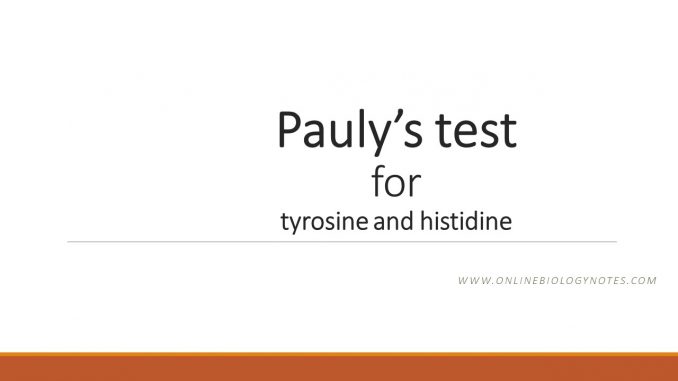
Pauly’s test: Objective, Principle, Reagents, Procedure and Result
Objective:
- to detect aromatic amino acid tyrosine or histidine
Principle:
Diazotized sulphanilic acid couples with amines, phenols and imidazole to form highly colored azo compounds. This coupling reaction must be done in cold condition since diazonium compound is formed in cold. Amino acids tyrosine or histidine coupled with diazonium salt in alkaline condition to form red coloured azo dye.
Reagents:
- 1 % tyrosine, 1 % histidine, 1%glycine
- 1 % sulphanilic acid in 10 % HCI
- 5 % sodium nitrite
- 10 % sodium carbonate
- Ice bath
** Diazonium compound=Sulfanilic acid + sodium nitrite + sodium carbonate
Procedures
- Take 2ml test solution in dry test tube.
- Similarly, take 2ml distilled water in another test tube as control.
- Add 1ml of sulphanilic acid, mix well and keep in ice bath.
- Now add 1ml sodium nitrite solution to all test tubes.
- Leave in ice bath for 3 minutes.
- Make the solution alkaline by adding 5ml of sodium carbonate.
- Look for the development of red colored complex.
Result interpretation:
- Positive Pauly test: red colored azo dye ( tyrosine and histidine)
- Negative Pauly test: no red color ( glycine)
